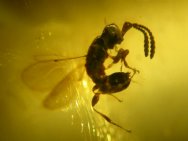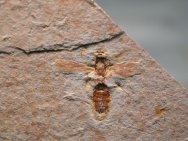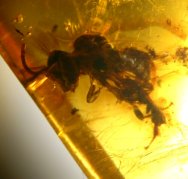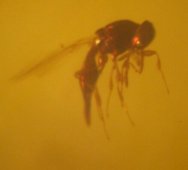Hymenopteran
insects, include bees, ants, and a diverse insect taxa referred to as wasps and
are believed to have first appeared in the Triassic more than 200 million years
ago. Many Hymenoptera are extremely social insects. For example, honeybees and
ants have developed regimented social systems in which members are divided into
worker, drone, and queen castes.
Interestingly,
such social hymenoptera may live together in nests or hives of many thousands
of individuals, all descended form a single queen. In this case, for the non-sexual
insects, the assurance that their genes will persist depends on the nurturing
of their many siblings, an entirely different construct of evolution than is normally
the case for animals. Female worker bees will often kill their brothers giving
favor to their sisters with whom they share 75% of their DNA.
Fossil
Ants,
Bees and Wasps
| |
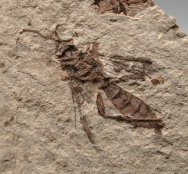 |
|
|
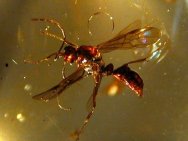 |
Wasp
L ower Cretaceous
Liaoning Province, China |
Scelionid
Wasp in Fossil Amber
Family Scelionidae
Oligocene - Miocene
Dominican Republic
These wasps are known to parasitize
a diverse variety of insects |
|
Family
Formicidae
Flying ant in Colombian fossil amber |
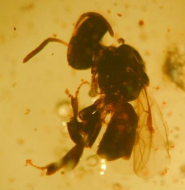 |
 |
|
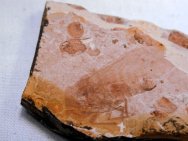 |
Stingless
bees in amber.
Stingless bees gathered fresh resin
on their back legs, bringing it to the nest as
construction material. Having no sting (hence
the name), they would defend their nest with their
mandibles (notice the overbite). |
Leaf
cutter ant in Colombian amber |
Stingless
Bee
Dominican Amber
These bees swarm out to proect
the nest by using the mouthparts which can inflict
a painful bite. The older members of the hive
were sent out to collect resin for nest repair,
a hazardous task from which some never returned.
Some have been found with balls of resin attached
to their hind legs. |
|
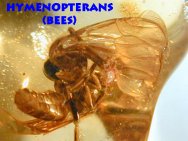 |
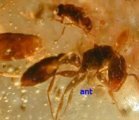 |
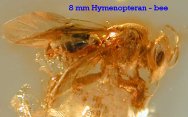 |
 |
Two
10 mm stingless bees in death embrace in amber. |
Various
ants in Colombian amber |
Large,
8 mm stingless bee in Colombian amber |
Large,
14mm flying ant in Colombian amber |
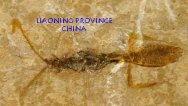 |
|
|
|
Upper
Cretacious to Lower Jurassic ant in shale from
Liaoning
China Province, Peoples Republic of China |
Pteromalid
Parasitic Wasp
Family Pteromalidae
Oligocene - Miocene
Dominican Republic
These wasps are known to parasitize
a diverse variety of insects; some are even predatory,
feeding directly on eggs, larvae, and adult insects
of several types. A few are what are known as
hyperparasitiods, parasitizing other types of
parasitic wasps. |
|
|
|
|
| | |


